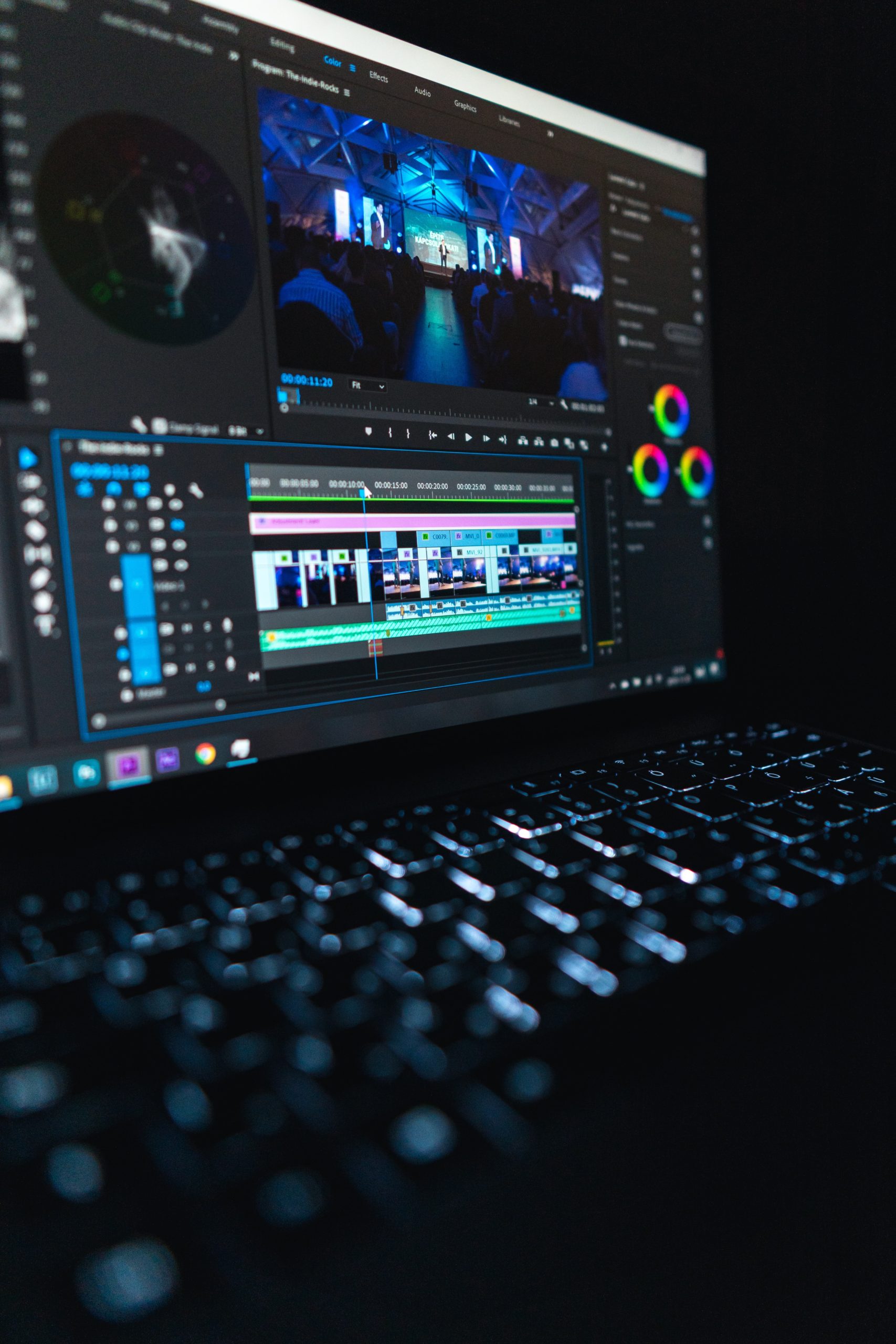Using video is a great way to highlight your business’s products and services, but the processes of making videos might seem complicated if you’re new to this kind of media. If you’re considering using professional video production for your business, you may have some questions about what all the process would entail. You may even be wondering what is involved in video post-production services. In this blog, we’ll tell you everything you need to know about what is involved in video post-production services.
What Is the Difference Between Pre-Production, Production, and Post-Production?
Pre-Production is all of the work that comes before full-scale production begins. Some of the steps in pre-production include script, casting, location, equipment, and crew. This is the planning stage where those working on the production get all their ducks in a row in order to make the project run smoothly.
Production is the stage during which all the footage for the video is shot. A video crew will set up the filming location with any required equipment, props, and, if necessary, talent needed for all the footage.
Post-production is all the work that is done the footage after all recording has taken place. The raw footage will be cut and edited to construct a full video. The post-production team will also work on making any adjustments to the audio and visual outputs of the video.
Who Is Involved in Post-Production?
There are several individuals that are involved in video production companies who help to get the film or footage to its final product. Generally, it all starts with the video director and producer who will archive all the raw footage before the editing begins.
In conjunction with the director and producers, the editing team will then begin to cut the raw footage and edit it together in its final structure. The team then adds titles, motion graphics, or any special effects to make sure it is aligned with the project brief. The final person to touch the video is the color grade who goes through all of the footage to color correct it first and then color grades the video to give it a consistent and stylized look.
The audio post-production is handled by a sound mixer, sound designer, editor, and possibly a foley artist. A music supervisor or composer will help score the video, while an audio effects supervisor will direct the creation of any additional sound effects needed to finish off the audio.
What Is the Post-Production Process
There are generally five steps involved in video post-production services.
Editing Content
In the first stage of post-production, video production companies will edit the content, beginning with sifting through all of the footage and selecting the top clips to move into the next cut. This is when all the raw footage is constructed to tell a cohesive story. An editor will review the script, look at the raw footage, and cut together the shots to match the direction of the project. The process usually begins with a rough gut, then the team will go back in and make refinements until the final output is complete.
Sound Editing
After the final video output is constructed, the sound team will go in and begin editing the audio. There can be many parts to this step, and it all depends on the type of video project you’re working on. The audio may need to be enhanced, or it may involve adding background music, sound effects, or a full soundtrack. Sound editors can also remove any background noise or sounds that should not be included in the final audio output.
Visual Effects
The third step in video post-production services is adding any necessary video effects. Editors can add in any special or computer-generated effects that are too expensive or complicated to film in real life. These are what are known as motion graphic templates (MOGRTS), visual effects (VFX), or motion design.
Sound Mixing
Next, the post-production team will work on sound mixing. In this step, final adjustments are made to all audio portions of the video to make sure the levels, clarity, and tones are all consistent.
Color Grading
The final step of video post-production services is color grading. During this step, a colorist will go through the entire video to make sure all lighting and coloring is consistent. If not, the colorist can make digital adjustments to improve the appearance. Color grading is important for establishing mood in a video.
Let Media Pouch Manage Your Post-Production Needs
If you want to work with one of the best video production companies in Austin, Media Pouch is here to help you. We’re not just another boring and traditional video production company. To find out more about how we can help you, contact Media Pouch today.





